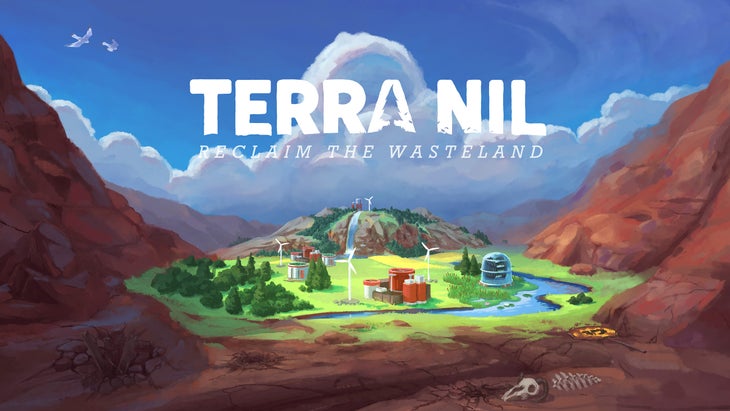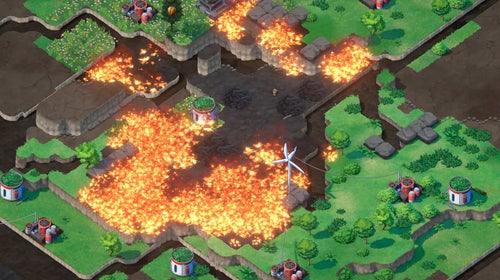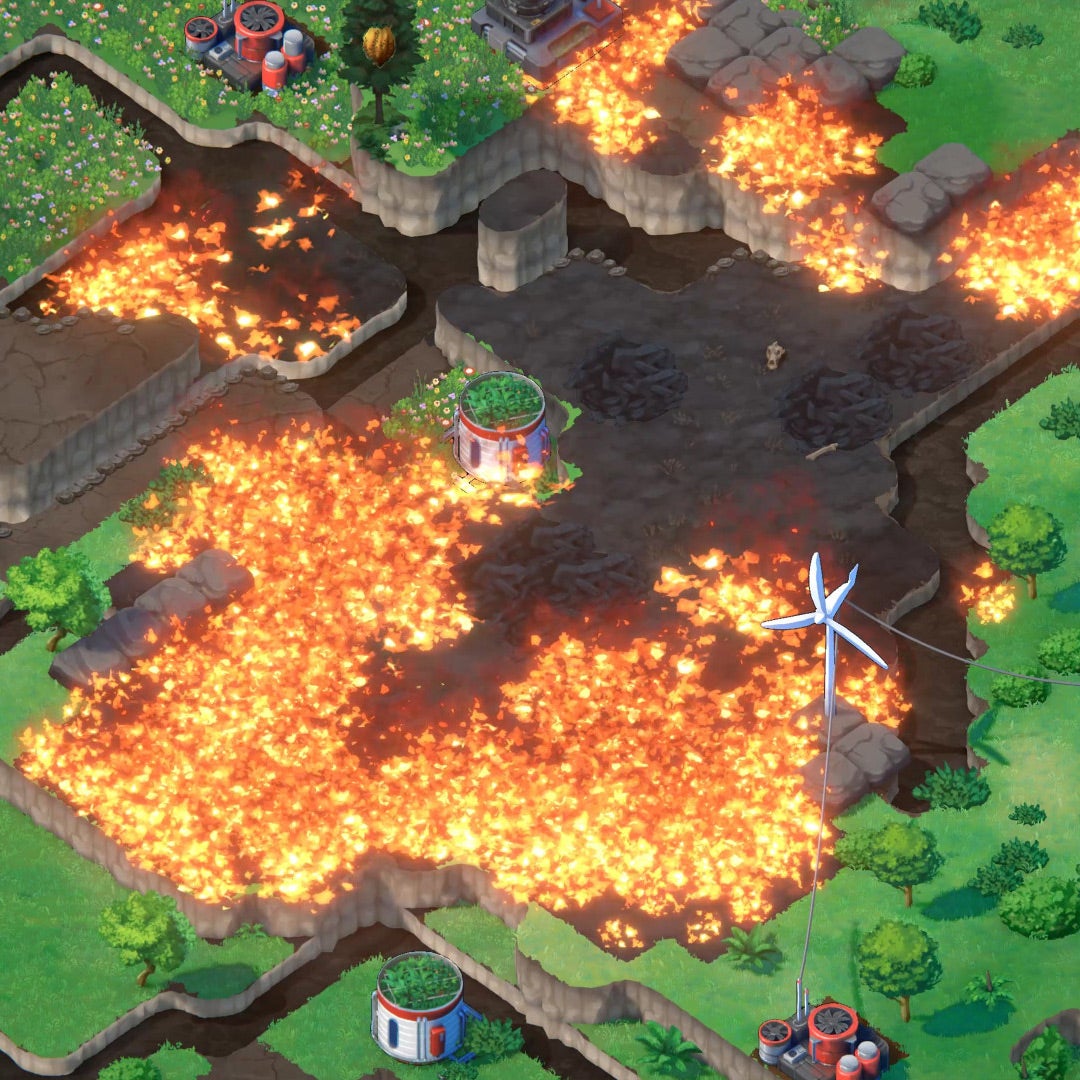Climate change. Garbage patches in the oceans. Extreme weather. Invasive species. PFAS “forever chemicals” in the water supply. Mass extinction. Do these images��raise your stress level? Feel like the natural world is teetering on the brink?
Well, relax a bit. Here—let’s pretend that everything bad has already happened to our planet, and in the worst ways. But there’s a silver lining in this imaginary scenario: we’ve been born into a future where we can use a combination of technology and the resilience of Mother Nature to fix it all.
That’s the premise of the new strategy video game Terra Nil, where players visit lifeless and polluted areas of a destroyed world and must then clean it up and restore a diverse ecosystem. Much like a traditional city-builder strategy competition (such as Skylines �ǰ���SimCity), the game’s central challenge is to optimally place different kinds of buildings in an empty landscape. The twist in Terra Nil is that those buildings must all be removed at the end, leaving a verdant natural paradise.
I played Terra Nil for the roughly ten hours it took me to get through all of the scenarios and complete most achievements. I enjoyed the game, and it made me feel relaxed, like the video equivalent of zen gardening. It was fun to play around my young children, as it’s very peaceful and offered a small amount of environmental education. Most of my friends are into faster and more competitive games, but I’d recommend this one as a good and satisfying palette cleanser. The game also made me eager to go outside and actually try and heal our world.

Each play-through, dubbed a “Restoration,” starts in a temperate zone where we are initially asked to clean polluted soil by constructing Toxin Scrubber buildings, and then water the ground until it becomes grassland. The game’s chill, hopeful soundtrack—along with the simple and pleasant graphics—make it an easy hang. Once there’s enough grassland, we reach a second phase for the region where we add higher-quality habitat. This is where the magic of creating an ecosystem arises—the game board becomes more active and visually��appealing with each added section of forest or scrubland or reef.
The final phase for the region is a cleanup where the player must reintroduce animals to the area and then remove all of the buildings. Watching the animals roam at this point is great, but it can ruin the game’s vibe if you think you’ve cleaned up all of your buildings just to find out that you missed one and have to spend minutes arranging its retrieval. Yes, I did this more than once.
There are four regions to address: Temperate, Tropical, Polar, and Continental. Each region follows the same three-phase pattern of grass cover, ecosystem enrichment, and cleanup, but they have their own challenges like lava and ice, and different sets of available buildings to use to overcome them. In the last region (Continental), the habitat must be built on a partially submerged city, and a radiation meter gives an eerie clue as to how the world became barren. After the radiation is mitigated and a new forest rises above the buildings, the player builds a spacecraft and leaves the planet to continue healing on its own. Beautiful.
Terra Nil is slow-paced and stress-free, and the warm and fuzzy soundtrack feels calming, but I do find the game’s premise more compelling than the actual gameplay. It’s lovely to see the world come back to life in accelerated time, but I cannot help feel like fixing a digital biosphere is a hollow victory when our real one��is declining.
What can we do? We don’t have the magical technology of Toxin Scubbers, Recycling Drones, or Radiation Cleansers that we can just plop down to solve the world’s problems. We hear a lot about reducing our carbon footprint by driving and flying less, abandoning single-use plastics, and recycling, but those efforts can feel insignificant. Many people doing those things can make a collective difference, but the impact of an individual is infinitesimal. So I offer an additional approach to sustainability where, like in Terra Nil, you can see the impact: be a warrior for your local native plants and animals.
Every ecosystem is built on producers—plants—and the next tier of the food chain is comprised of the insects that rely on those plants. Most insects are specialized to feed, shelter, and reproduce with the support of specific plants that they evolved with, so any area’s native insects rely heavily on its native plants. Without those plants and insects, the rest of the ecosystem is out of balance—less productive, less varied, and less vibrant.
Huge swaths of the United States are almost devoid of valuable native plant life due to expansive lawns, and the spread of invasive species like forest-choking kudzu and English ivy. This is a problem that individuals can actually help solve. While we can’t return old-growth forests to our farmland or cities or subdivisions, we can reduce our individual lawn footprints and plant beautiful native gardens that provide islands of habitat. Watch your yard after establishing a native garden, and you’ll find that it’s attracting a variety of life—most visibly birds, but also reptiles, amphibians, and incredible insects (and not the kinds that want to bite you or live in your house).
In our wild spaces, native plants are often outcompeted or killed by aggressive foreign species, but we can give natives a competitive edge. Many parks have invasive-removal events where attendees can learn how to remove harmful vines without damaging tree bark, battle back choking ground covers, or uproot problem shrubs. Revisit the area in the months and years after a removal and you’ll see the life returning, with beneficial native plants more likely to survive. If you notice invasives on your own land, spend the effort to remove them so they don’t spread further. Your actions will make a difference. Your actions will make space for our resilient natural world to thrive, and it is much faster and much more satisfying to free a single tree from a deadly English-ivy infestation than to complete a Restoration in Terra Nil.
Terra Nil is available on PC through Steam, and on Android and iOS only with a Netflix subscription.
The earth is available outside.


